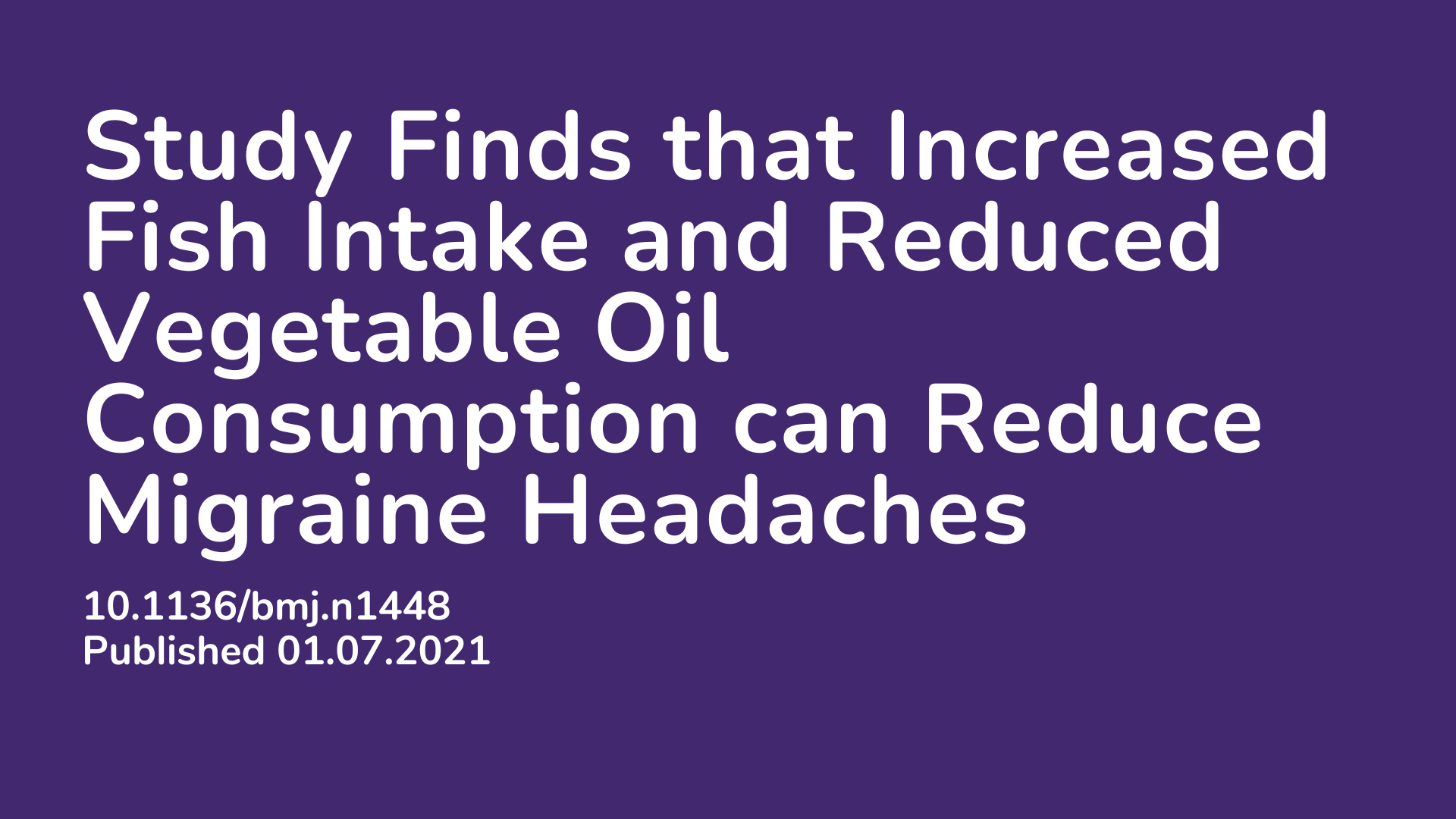Summary: Migraines are extremely common globally and existing pharmaceutical treatments often do not provide sufficient pain relief. This study shows that dietary changes may be another way individuals can try and manage their pain. Particular dietary fats such as omega-6 and omega-3 have important functions in the body but need to be consumed in appropriate ratios as omega-3 has shown to decrease inflammation whilst omega-6 has shown to promote it. Due to the way most food today is produced, individuals are generally eating more omega-6 than omega-3. The aim of this paper was to assess the impact of omega-3 and omega-6 in migraine frequency and severity. 182 patients currently diagnosed with migraines were included in this randomized controlled trial. They were issued three dietary trends 1. a typical western diet (high in omega-6 and low in omega-3, 2. a typical western intake of omega-6 but increased omega-3 and 3. increased omega-3 and lowered omega-6 intake. The source of omega-3 was from fish, not supplementation. The source of omega-6 was vegetable oils. Those who followed a diet high in omega-3 and low in omega-6 showed the biggest improvement in pain and headache outcomes. Participants reported a reduction in pain medication as well as less days a month with headaches and pain.
Abstract:
Objective: To determine whether dietary interventions that increase n-3 fatty acids with and without reduction in n-6 linoleic acid can alter circulating lipid mediators implicated in headache pathogenesis, and decrease headache in adults with migraine. Design: Three arm, parallel group, randomized, modified double blind, controlled trial. Setting: Ambulatory, academic medical center in the United States over 16 weeks. Participants:182 participants (88% women, mean age 38 years) with migraines on 5-20 days per month (67% met criteria for chronic migraine).Interventions:Three diets designed with eicosapentaenoic acid (EPA), docosahexaenoic acid (DHA), and linoleic acid altered as controlled variables: H3 diet (n=61)—increase EPA+DHA to 1.5 g/day and maintain linoleic acid at around 7% of energy; H3-L6 diet (n=61)—increase n-3 EPA+DHA to 1.5 g/day and decrease linoleic acid to ≤1.8% of energy; control diet (n=60)—maintain EPA+DHA at <150 mg/day and linoleic acid at around 7% of energy. All participants received foods accounting for two thirds of daily food energy and continued usual care. Main outcome measures: The primary endpoints (week 16) were the antinociceptive mediator 17-hydroxydocosahexaenoic acid (17-HDHA) in blood and the headache impact test (HIT-6), a six item questionnaire assessing headache impact on quality of life. Headache frequency was assessed daily with an electronic diary. Results: In intention-to-treat analyses (n=182), the H3-L6 and H3 diets increased circulating 17-HDHA (log ng/mL) compared with the control diet (baseline-adjusted mean difference 0.6, 95% confidence interval 0.2 to 0.9; 0.7, 0.4 to 1.1, respectively). The observed improvement in HIT-6 scores in the H3-L6 and H3 groups was not statistically significant (−1.6, −4.2 to 1.0, and −1.5, −4.2 to 1.2, respectively). Compared with the control diet, the H3-L6 and H3 diets decreased total headache hours per day (−1.7, −2.5 to −0.9, and −1.3, −2.1 to −0.5, respectively), moderate to severe headache hours per day (−0.8, −1.2 to −0.4, and −0.7, −1.1 to −0.3, respectively), and headache days per month (−4.0, −5.2 to −2.7, and −2.0, −3.3 to −0.7, respectively). The H3-L6 diet decreased headache days per month more than the H3 diet (−2.0, −3.2 to −0.8), suggesting additional benefit from lowering dietary linoleic acid. The H3-L6 and H3 diets altered n-3 and n-6 fatty acids and several of their nociceptive oxylipin derivatives in plasma, serum, erythrocytes or immune cells, but did not alter classic headache mediators calcitonin gene related peptide and prostaglandin E2. Conclusions: The H3-L6 and H3 interventions altered bioactive mediators implicated in headache pathogenesis and decreased frequency and severity of headaches, but did not significantly improve quality of life.
Article Publication Date: 01/07/2021
DOI: 10.1136/bmj.n1448



